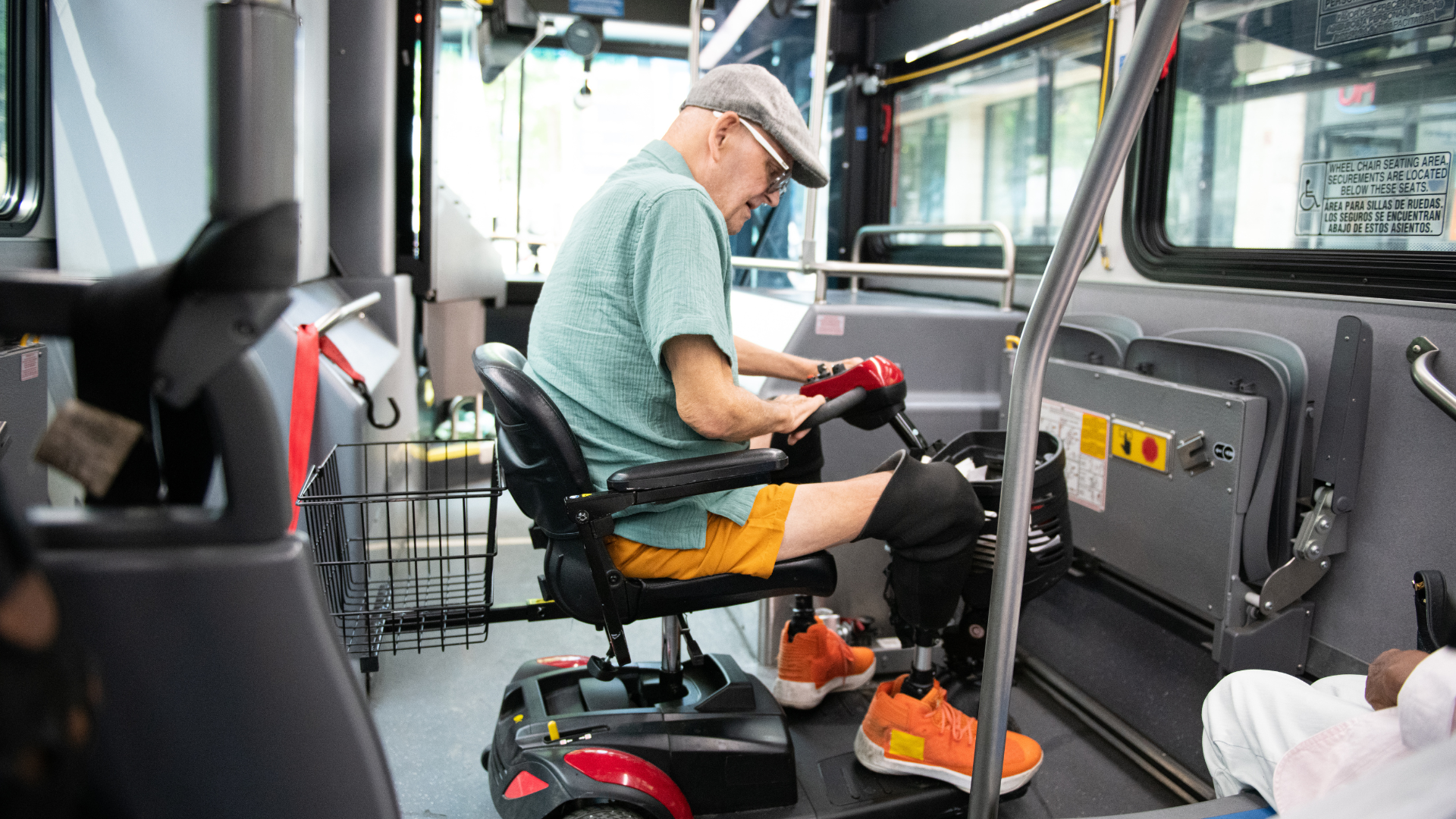
If you use a power wheelchair in California, taking the bus can be important for your independence. However, figuring out how to bring your chair on the bus can be tricky. Our mobility specialists break down everything you need to know to make your bus trips hassle-free!
Can Power Wheelchairs Go On Buses?
The short answer is yes. Power wheelchairs can generally be taken on buses in California, but there are specific guidelines to follow. The Americans with Disabilities (ADA) requires public transportation systems to accommodate people with disabilities and their mobility devices, including power wheelchairs.
Are There Size and Weight Restrictions?
The ADA stipulates that wheelchairs be no more than 48 inches high and 30 inches wide so they don’t block aisles or interfere with the safety of other passengers. Additionally, the combined weight of the wheelchair and user shouldn’t exceed 600 pounds. However, transportation operators must still accommodate you if the bus lift can support more weight.
Do I Have to Secure My Wheelchair on the Bus?
Yes, power wheelchairs must be secured during transit in California. Transit operators must also train their staff to help passengers with disabilities and their mobility devices.
When on the lift, the wheelchair should be turned off and locked. The power can be restored once the lift is level with the bus floor. However, when parked and strapped in on the bus, you should switch the chair off again for safety.
5 Tips for Riding the Bus with an Electric Wheelchair
To ensure a smooth, safe bus ride with your electric wheelchair, follow these tips:
1. Prepare Your Wheelchair
Make sure your chair is in good working condition and has a fully charged battery. Remove any loose items or bags to prevent them from falling off during the ride.
2. Board and Exit Carefully
Wait for the bus to come to a complete stop before attempting to board or exit. Align your wheelchair parallel to the bus, wait for the ramp or lift, then drive onto it and secure your position in the designated area.
3. Secure Your Wheelchair
Use the bus-provided restraints to secure your power wheelchair in place.
4. Turn off Your Wheelchair
As mentioned above, turn off your wheelchair during the ride to conserve battery and ensure safety.
5. Consult With Your Local Transit Authority
Regulations may vary between different transit systems in California, so check with your local transit authority for specific policies and requirements.
What Are My Other Options?
While most buses in California can accommodate power wheelchairs, there may be times when your wheelchair doesn’t fit or the bus cannot transport it. In those cases, consider these alternatives:
- Bumper-mounted rack or basket - These external mounts attach to your vehicle's bumper.
- Pull-behind trailer - As a last resort, you can use a pull-behind trailer, though this may not be the most convenient option for regular use.
- Wheelchair-accessible van - Invest in or modify a van for easy and permanent wheelchair transportation.
- Rideshare services - Apps like Lyft and Uber offer wheelchair-accessible (WAV) options in select California cities for on-demand rides.
Contact Our California Mobility Experts Today!
At Freedom Mobility, we know how important reliable transportation is for power wheelchair users in California. Whether you need help with wheelchair repairs or want to find the best solution for your needs, our team of RESNA-certified experts is here to help.
Call 800-980-5696 or contact us today for a FREE consultation!
July 17, 2024 by Freedom Mobility
If you use a power wheelchair in California, taking the bus can be important for your independence. However, figuring out how to bring your chair on the bus can be tricky. Our mobility specialists break down everything you need to know to make your bus trips...